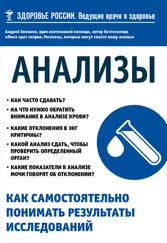10. Muraven M., Baumeister R.F. Self-regulation and depletion of limited resources: Does self-control resemble a muscle? // Psychological Bulletin , № 126, 2000, pp.247–259
11. Csikszentmihalyi M. Finding Flow: The Psychology of Engagement in Everyday Life – New York: Basic Books, 1997, p.65
12. Там же, с. 67
13. Lindstrom M. Buyology – New York: Broadway Business, 2008, p.99
14. Дополнительную информацию о других интереснейших исследованиях, подобных этому, можно найти в книге: Thaler R.H., Sunstein C. Nudge: Improving Decisions About Health, Wealth and Happiness – New York: Penguin, 2008
15. Barnes B. Lab watches web surfers to see which ads work // New York Times , July 26,2009
16. Leyden J. One in five U.S. firms has sacked workers for e-mail abuse // June 23, 2003, источник: www.theregister.co.uk
17. Thompson C. Meet the life hackers // New York Times , October 16, 2005, цитируется исследование Калифорнийского университета в Ирвайне
18. Hafner K. You there, at the computer: Pay attention // New York Times , February 10, 2005
19. Meyers A.W., Stunkard A.J., Coll M. Food accessibility and food choice // Archives of General Psychiatry , № 37, 1980, pp.1133–1135. Более подробное описание этого и вышепроцитированного исследований, а также и многих других им подобных, можно найти в блестящей книге Б.Вэнсинка «Бездумное питание»: Wansink B., Mindless Eating: Why we eat more than we think – New York: Bantam, 2006, pp.78–88.
20. Meiselman H.L., Hedderley D., Staddon S.L., Pierson B.J., Symonds C.R. Effect of effort on meal selection and meal acceptability in a student cafeteria // Appetite, № 23, 1994, pp.43–45
21. Wansink B., Mindless Eating: Why we eat more than we think – New York: Bantam, 2006, p.82
22. Hawkes N. Everyone must be an organ donor unless the opt out, says Chief Medical Officer // July 18, 2007, источник: www.timesonline.co.uk
23. Vohs K.D. et al. Making choices impairs subsequent self-control: A limited-resource account of decision making, self-regulation, and active initiative // Journal of Personality and Social Psychology , № 94(5), 2008, pp.883–898
24. Schwartz B. The Paradox of Choice – New York: Harper Perennial, 2004, p.113
Принцип 7. Социальные инвестиции
1. Shenk J.W. What makes us happy? // The Atlantic Monthly , June 2009
2. Valliant G. Yes, I stand by my words, «Happiness equals love – full stop» // Positive Psychology News Daily , July 16, 2009. Источник: http://positivepsychologynews.com/news/george-valient/200907163163
3. Diener E., Biswas-Diener R. Happiness: Unlocking the Mysteries of Psychological Wealth – Maiden, MA: Wiley-Blackwell, p.66
4. Diener E., Seligman M.E.P Very happy people // Psychological Science, № 13, 2002, pp.81–84
5. Доскональный разбор нашей врожденной потребности образовывать связи с другими людьми см. в статье: Baumeister R.F., Leary M.R. The need to belong: Desire for interpersonal attachments as a fundamental human motivation // Psychological Bulletin, № 117(3), 1995, pp.497–529
6. Особенно ярко и глубоко биологическая роль социального контакта разобрана в следующей работе: Lewis T., Amini F., Lannon R. A General Theory of Love – New York: Vintage, 2001. Эмпирические данные о влиянии недостатка социальных контактов на ухудшение иммунитета см. в: Cohen S., Doyle W.J., Skoner D.P., Rabin B., Gwaltney J. Social ties and susceptibility to the common cold // Journal of the American Medical Association , № 277, 1997, pp.1940–1944
7. Hawkley L.C., Masi C.M., Berry J.D., Cacioppo J.T. Loneliness is a unique predictor of afe-related differences in systolic blood pressure // Psychology and Aging , № 21(1), 2006, pp.152–164
8. Cacioppo J.T. Loneliness: Human Nature and the Need for Social Connection – New York: W.W.Norton and Company, 2008
9. Blackmore E.R. et al. Major depressive episodes and work stress: Results from a national population survey // American Journal of Public Health , № 97(11), 2007, pp.2088–2093
10. Berkman L.F., Leo-Summers L., Horwitz R.I. Emotional support and survival after myocardial infarction. A prospective-population-based study of the elderly // Annals of Internal Medicine , № 117, 1992, pp.1003–1009
11. Spiegel D., Bloom J., Kraemer H., Gottheil E. Effect of psychosocial treatment on survival of patients with metastatic breast cancer // The Lancet , № 2, 1989, pp.888–891
12. House J., Landis K., Umberson D. Social relationships and health // Science , № 241, 1988, pp.540–544
13. Lewis T., Amini F., Lannon R. A General Theory of Love – New York: Vintage, 2001, p.206
14. Heaphy E., Dutton J.E. Positive social interactions and the human body at work: Linking organizations and physiology // Academy of Management Review , № 33(1), 2008, pp.137–162; Theorell T., Orth-Gomе́r K., Eneroth P. Slow-reacting immunoglobin in relation to social support and changes in job strain: A preliminary note // Psychosomatic Medicine , № 52, 1990, pp.511–516
15. Carlson D.S., Perrewe P.L. The role of social support in the stressor-strain relationship: An examination of work-family conflict // Journal of Management , № 25(4), 1999, pp.513–540
16. Heaphy E., Dutton J.E. Positive social interactions and the human body at work: linking organizations and physiology // Academy of Management Review , № 33(1), 2008, pp 137–162
17. Goleman D. Working with Emotional Intelligence – New York: Bantam, 1998, pp.217–218
18. Lewis M. The Blind Side – New York: W.W.Norton, 2006, p.111
19. Rosengren A., Orth-Gomе́r K., Wedel H., Wilhelmsen L. Stressful life events, social support, and mortality in men born in 1933 // British Medical Journal , № 307, 1993, pp.1102–1105
20. Valliant G. Yes, I stand by my words, «Happiness equals love – full stop» // Positive Psychology News Daily , July 16, 2009. Источник: http://positivepsychologynews.com/news/george-valient/200907163163
21. Dweck C.S. Mindset: The New Psychology of Success – New York: Ballantine, 2006, p.55
22. Carmeli A., Brueller D., Dutton J.E. Learning behaviors in the workplace: The role of high-quality interpersonal relationships and psychological safety // System Research and Behavioral Science , № 26, 2009, pp.81–98
23. Holahan C.K., Sears R.R. The Gifted Group in Later Maturity – Palo Alto, Calif.: Stanford University Press, 1995
24. Collins J. Good to Great: Why Come Companies Make the Leap… And Others Don’t – New York: HarperBusiness, 2001
25. Campion M.A., Papper E.M., Medsker G.J. Relations between work team characteristics and effectiveness: A replication and extension // Personal Psychology , № 49, 1996, pp.429–452
26. Heaphy E., Dutton J.E. Positive social interactions and the human body at work: Linking organizations and physiology // Academy of Management Review , № 33(1), 2008, pp 137–162
Читать дальше
Конец ознакомительного отрывка
Купить книгу












